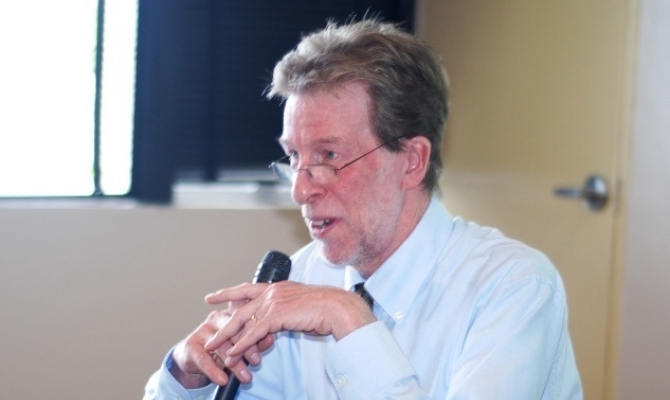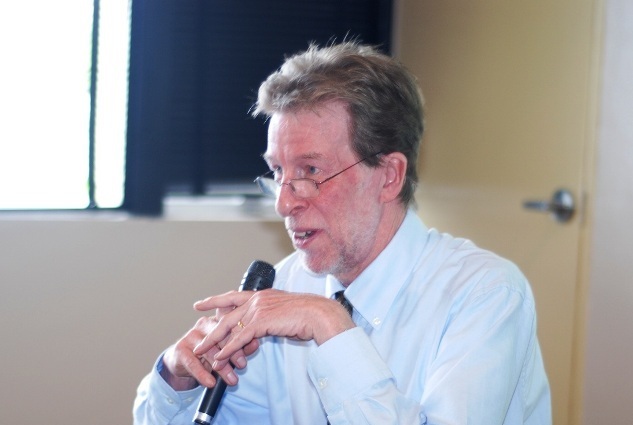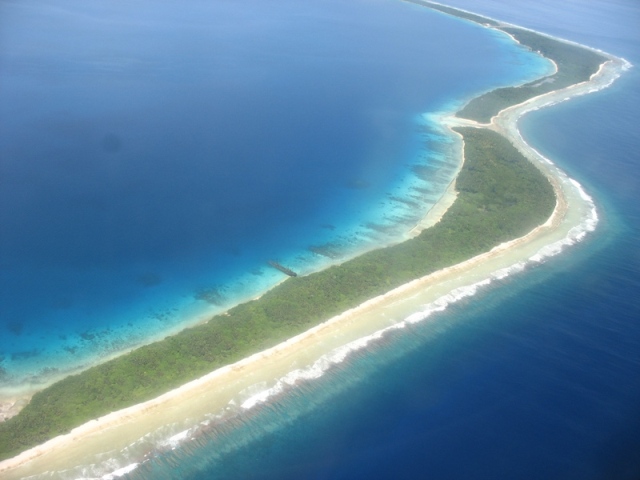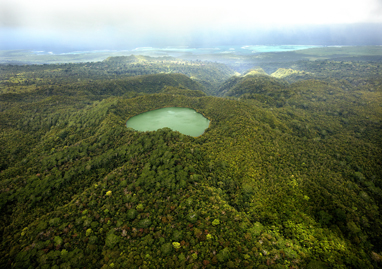
"Yet we continue to destroy them, we continue to allow them to be degraded and we do this at our own peril. We are losing the systems we depend on." - Prof. Nick Davidson, Deputy Secretary-General of the Ramsar Convention Secretariat.
26 March 2011, Palau - A warning to step up efforts to conserve our wetlands rang clear, during day one of an Oceania meeting on wetlands in Palau.
Over 30 participants have come together this week for to prepare for the 11th Conference of the Parties to the Ramsar Convention on Wetlands which will be held in Romania in July. There are 160 country parties to the Convention, of which seven are from the Pacific region: Australia, Fiji, Marshall Islands, New Zealand, Palau, Papua New Guinea and Samoa.
The Ramsar Convention on Wetlands provides the framework for national action and international cooperation for the conservation and wise use of wetlands and their resources.
 Professor Nick Davidson, Deputy Secretary-General of the Rmasar Convention Secretariat
Professor Nick Davidson, Deputy Secretary-General of the Rmasar Convention Secretariat
"We know we still have challenges, but we also know that our inland and coastal wetlands are crucial for our lives, we depend on them for our livelihoods. It's not just about biodiversity conservation, the birds and the trees, it's about the benefits we get from the wetlands and the relationship between wetlands and our people," said Prof. Nick Davidson, Deputy Secretary-General of the Ramsar Convention Secretariat.
"Yet we continue to destroy them, we continue to allow them to be degraded and we do this at our own peril. We are losing the systems we depend on."
In order to be a contracting party to the Convention on 
Mangroves and Coral reefs are the two main wetland types in the Pacific which contains 3% of the world's mangroves and about 25% of the world's coral reefs. Presently, there are 2,000 Ramsar Sites worldwide that cover almost 200,000,000 hectares constituting the largest network of protected areas in the world.
Pictured: Jaluit Atoll (Ramsar site)
© V. Jungblut
Of these 2,000 sites, six are located in the Pacific island countries. These are Lake Lanoto'o National Park in Samoa, Upper Navua Conservation Area in Fiji, Jaluit Atoll Conservation Area in the Marshall Islands, Luke Kutubu Wildlife Management Area and Tonda Wildlife Management Area in Papua New Guinea, and Lake Ngardok Nature Reserve in Palau.
Still, more work must be done in order to conserve and protect our wetlands.
"There is a lot of conservation work happening to save our wetlands in the Pacific and we must commend and congratulate all those who are undertaking these timely efforts," said Mr. Vainuupo Jungblut, the Ramsar Officer at SPREP.
"We're really pleased to know that there are countries that are indicating commitment towards conserving their wetlands and we welcome the  efforts underway by Kiribati, Tonga and Vanuatu to become parties to the Ramsar Convention on Wetlands."
efforts underway by Kiribati, Tonga and Vanuatu to become parties to the Ramsar Convention on Wetlands."
Pictured: Lake Lanoto'o (Samoa)
© S. Chape
Notes:
The 5th Oceania Regional Preparatory Meeting for the 11th Conference of the Contracting Parties to the Convention on Wetlands, hosted in Palau is from 26 to 30 March. The meeting is attended by Australia, Fiji, Kiribati, Marshall Islands, New Caledonia, New Zealand, Palau, Papua New Guinea, Samoa, Tonga, and Vanuatu.
Partners that are attending the meeting are from Japan International Cooperation Agency (JICA) Palau Office, IUCN Oceania Regional Office, Palau Conservation Society, Birdlife International and the Micronesia Challenge Regional Office, among others.
The 5th Oceania Regional Meeting for Ramsar COP11 in Palau is funded by the Governments of Australia and France, with additional support from the UNEP and EU funded Multi-lateral Environment Capacity building project.